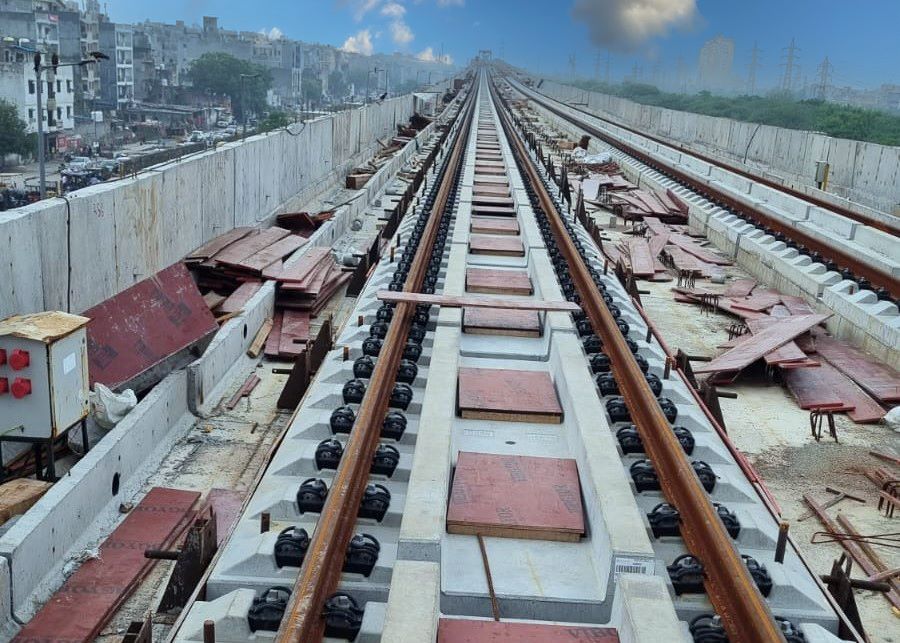DELHI (Metro Rail News): The Track-laying work has begun in the underground tunnels of the Delhi segment on the Delhi-Ghaziabad-Meerut RRTS corridor. On both the up and down platforms of the Anand Vihar station, this procedure has started, and track slabs are now being placed. The track laying work will soon be carried out in the tunnels and move in the direction of the New Ashok Nagar station as this project advances. Both parallel tunnels that run from Anand Vihar to New Ashok Nagar have already been built.

In addition, the elevated segment between New Ashok Nagar RAPIDX station and the Khichripur underground tunnel ramp has had almost 2 kilometres of track installed. For both the up and down lines, a total of 5 kilometres of the track will be installed on this elevated segment between Anand Vihar and New Ashok Nagar, out of which approximately 2 kilometres of that track have already been laid.
The viaduct construction from New Ashok Nagar to the Khichripur ramp is finished, and the ramp connecting the underground tunnel and elevated section is in its final phase. This will soon connect the underground and elevated sections of the Delhi corridor.
For the first time in India, advanced technology is being used to produce high-strength ballastless track slabs. These slabs have a longer lifespan, require less maintenance, and reduce overall costs. These slab tracks, measuring 4m x 2.4m, are made of high-quality concrete. A PCC (Plain Cement Concrete) base is first constructed to strengthen the track in the circular tunnel.
To reduce tunnel vibrations caused by high-speed trains, NCRTC is implementing a mass-spring system. In the process of this mass-spring system installation, a layer of first-level concrete is applied on the tunnel’s surface, before laying the slab tracks in the tunnels. After that, a mass-spring sheet is laid on this layer, and the track is laid on top of it. It significantly reduces the vibration inside the tunnel.
After installing the slab tracks, the signalling system and traction (OHE) installation will begin. The track technology will enable the operation of high-speed, high-frequency RAPIDX trains with a design speed of 180 km/h, ensuring passenger safety and comfort.
The construction of Sarai Kale Khan, New Ashok Nagar, and Anand Vihar RAPIDX stations is progressing well, with advanced work on platforms and concourse levels. The goal is to commission the entire Delhi-Ghaziabad-Meerut corridor by 2025, with the Sahibabad to Duhai Depot section already ready for operations.






